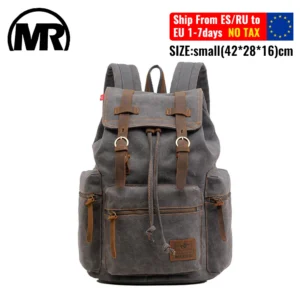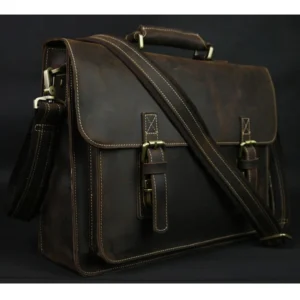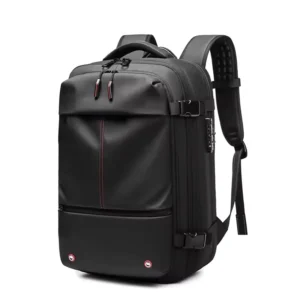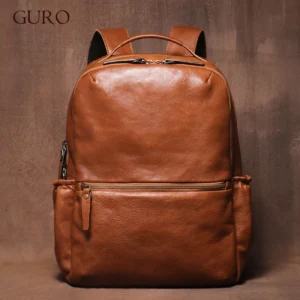Finding the right backpack for your valuable tech gear can feel like solving a complex puzzle. With laptops, tablets, cameras, and other devices coming in various sizes, choosing a backpack with proper dimensions isn’t just about convenience—it’s about protecting your investments and maintaining comfortable carry throughout your day.
Many tech enthusiasts discover too late that standard backpacks lack the specific dimensional requirements needed for safely transporting electronic equipment. Generic compartments often provide insufficient padding, improper sizing, or inadequate organization for cables and accessories.
Throughout this guide, you’ll discover:
– How to understand various backpack measurement systems
– Techniques for properly measuring your tech devices
– Specific dimension requirements for laptops, cameras, and drones
– How to account for accessories and organization needs
– Ways to balance protection with comfort and travel requirements
Proper care of your tech backpack ensures longevity and continued protection for your devices. Regular leather conditioning and waterproofing helps maintain the structural integrity that keeps your gear safe in all conditions.
Understanding Backpack Measurement Systems
When shopping for a tech backpack, you’ll encounter three primary measurement systems, each serving different purposes:
External Dimensions
External measurements (height × width × depth) determine how a backpack looks on your back and whether it meets travel restrictions. These dimensions represent the outermost points of the backpack when fully packed. Remember that external measurements include any protruding pockets or accessories that extend from the main compartment.
Internal Dimensions
Internal measurements are the most critical for tech gear compatibility. These dimensions indicate the actual usable space inside compartments and dedicated sleeves. When a manufacturer states “fits up to 15-inch laptop,” they’re referring to the internal dimensions of the laptop sleeve, not necessarily the actual computer size.
Volume Capacity
Capacity is typically expressed in liters and represents the total storage space. However, be aware that manufacturers calculate volume differently. Some include every pocket and compartment, while others measure only the main storage area.
| Backpack Type | Typical External Dimensions (inches) | Typical Volume (liters) |
|---|---|---|
| Daily Commute | 18” × 12” × 6” | 15-25L |
| Tech Professional | 19” × 13” × 7” | 25-30L |
| Photography | 20” × 14” × 8” | 25-35L |
| Travel | 22” × 14” × 9” | 30-45L |
One important distinction to understand is that “15-inch compatible” doesn’t guarantee your specific 15-inch laptop will fit. This designation often refers to a standard 15.6” laptop size, but actual physical dimensions vary by manufacturer and model.
When considering proper dimensions for your tech backpack, it’s helpful to understand how leather carry-on backpack dimensions relate to airline restrictions while still providing adequate protection for your valuable devices.
Measuring Your Tech Devices Properly
Before selecting a backpack, it’s essential to know the exact dimensions of your devices. Follow these measurement guidelines for common tech items:
Laptops
- Measure the width (side to side)
- Measure the depth/length (front to back)
- Measure the height/thickness (bottom to top)
- Note that diagonal screen measurement (e.g., 15.6”) doesn’t reflect physical dimensions
- Account for any protruding ports or battery packs
Tablets and E-readers
- Measure the physical dimensions including any case or protective cover
- Consider orientation (portrait vs. landscape) for sleeve fit
- Account for any attached accessories like keyboards
Cameras
- Measure the body with standard lens attached
- Measure additional lenses individually
- Consider whether you need quick access or deep protection
Drones
- Measure in folded position for storage
- Account for controller and accessories
- Consider specialized compartments with customizable dividers
Common Measurement Mistakes:
– Forgetting to include device cases in measurements
– Relying only on manufacturer’s stated screen size
– Not accounting for accessories and peripherals
– Ignoring depth/thickness measurements
Regular maintenance of your leather backpack ensures it retains its shape and protective properties. The ultimate guide to conditioning your leather backpack provides essential information for maintaining the structural integrity that protects your tech investments.
Laptop Backpack Dimensions: Comprehensive Guide
Selecting a backpack with appropriate laptop dimensions is perhaps the most critical decision for tech carriers. The laptop compartment should be slightly larger than your device to allow for protective padding while preventing excessive movement.
Standard Laptop Dimensions
| Laptop Size | Typical Dimensions (inches) | Typical Dimensions (cm) | Recommended Sleeve Size (inches) | Recommended Sleeve Size (cm) |
|---|---|---|---|---|
| 13-inch | 12 × 8.5 × 0.6 | 30.5 × 21.6 × 1.5 | 13 × 9.5 × 1 | 33 × 24 × 2.5 |
| 14-inch | 13 × 9 × 0.7 | 33 × 22.9 × 1.8 | 14 × 10 × 1 | 35.6 × 25.4 × 2.5 |
| 15.6-inch | 14.5 × 10 × 1 | 36.8 × 25.4 × 2.5 | 15.5 × 11 × 1.5 | 39.4 × 28 × 3.8 |
| 16-inch | 14.1 × 9.7 × 0.6 | 35.8 × 24.6 × 1.5 | 15 × 10.5 × 1 | 38.1 × 26.7 × 2.5 |
| 17.3-inch | 16.3 × 10.8 × 1.2 | 41.4 × 27.4 × 3 | 17.5 × 12 × 1.5 | 44.5 × 30.5 × 3.8 |
Sleeve Size vs. Laptop Size
Your laptop sleeve should be approximately 0.5-1 inch (1.3-2.5 cm) larger in each dimension than your laptop. This provides:
– Sufficient padding on all sides
– Easy insertion and removal
– Protection from impacts
– Space for minimal accessories
Gaming laptops typically require larger compartments due to their increased thickness and larger power bricks. For these specialty laptops, look for backpacks with at least 1.5 inches (3.8 cm) of depth in the laptop compartment.
The positioning of the laptop compartment is equally important. A suspended sleeve design keeps your device elevated from the bottom of the bag, providing shock protection if you set the backpack down too roughly.
For professionals carrying standard 15-inch laptops, our 15-inch leather laptop backpacks provide precisely measured compartments with adequate padding and protection.
Camera and Drone Backpack Requirements
Photography and videography equipment present unique dimensional challenges due to their irregular shapes, fragility, and modular nature.
Camera Setups and Space Requirements
Minimal Setup (20-25L backpack)
– DSLR/Mirrorless body: ~6” × 4.5” × 3” (15 × 11.4 × 7.6 cm)
– 1-2 standard lenses: ~3” diameter × 4” length (7.6 × 10.2 cm) each
– Basic accessories: memory cards, batteries, small charger
Standard Setup (25-30L backpack)
– Camera body with grip: ~6” × 6” × 3” (15 × 15 × 7.6 cm)
– 3-4 lenses of varying sizes
– Flash unit: ~3” × 3” × 8” (7.6 × 7.6 × 20.3 cm)
– Portable charger, multiple batteries, filters
Professional Setup (35-45L backpack)
– Multiple camera bodies
– 5+ lenses including telephoto (can exceed 12” or 30.5 cm in length)
– Multiple flash units
– Triggers, stabilizers, microphones
Drone Dimensions
Popular consumer drones typically fold to dimensions around 8.5” × 3.5” × 3.5” (21.6 × 8.9 × 8.9 cm) but require additional space for:
– Controller: ~6” × 4” × 2” (15.2 × 10.2 × 5.1 cm)
– Extra batteries: ~3” × 1.5” × 1” (7.6 × 3.8 × 2.5 cm) each
– Propellers and small parts
The key to proper camera and drone backpack dimensions is customizable compartmentalization. Look for bags with adjustable dividers that can be reconfigured as your gear collection changes.
For photographers and content creators who travel frequently with their equipment, our leather travel backpacks offer flexible storage solutions with proper padding to keep gear secure during transit.
Tech Accessories and Their Space Requirements
Beyond your primary devices, accessories require thoughtful consideration when selecting backpack dimensions. These small items often determine whether your backpack feels organized or chaotic.
Common Accessories Dimensions
- Power banks: 6” × 3” × 0.5” (15.2 × 7.6 × 1.3 cm)
- External hard drives: 5” × 3” × 0.5” (12.7 × 7.6 × 1.3 cm)
- Charging bricks: 4” × 2” × 1” (10.2 × 5.1 × 2.5 cm)
- Over-ear headphones (folded): 7” × 5” × 3” (17.8 × 12.7 × 7.6 cm)
- Mouse: 4.5” × 2.5” × 1.5” (11.4 × 6.4 × 3.8 cm)
- Cable organizers: 8” × 5” × 1” (20.3 × 12.7 × 2.5 cm)
When calculating space for accessories, remember:
– Group similar items together in dedicated pockets
– Allow for cable management solutions
– Consider quick-access needs vs. deep storage
– Account for bulky power adapters (especially for gaming laptops and professional equipment)
The total volume needed for accessories typically adds 3-5 liters (183-305 cubic inches) to your backpack requirements beyond what your main devices need.
Organization is equally important as raw space. Look for backpacks with:
– Cable management systems
– Small item pockets
– Pen/stylus holders
– RFID-protected pockets for digital security
Professional tech users appreciate the organizational capabilities of our men’s leather laptop backpacks with their thoughtfully designed storage solutions for both devices and accessories.
External Dimensions: Travel Considerations
For tech professionals who travel, external backpack dimensions must balance adequate protection with airline compliance. Most airlines have specific carry-on restrictions that your tech backpack must meet.
Common Airline Size Restrictions
| Airline Category | Typical Maximum Dimensions (inches) | Typical Maximum Dimensions (cm) |
|---|---|---|
| International Standard | 22 × 14 × 9 | 56 × 36 × 23 |
| European Carriers | 21 × 13 × 8 | 55 × 35 × 20 |
| Personal Item | 17 × 10 × 8 | 43 × 25 × 20 |
When measuring your backpack for travel compliance:
– Measure at the widest points
– Include any protruding pockets
– Account for expansion when fully packed
– Consider wheel wells on aircraft (typically reducing available space)
Compression straps can help reduce external dimensions temporarily without compromising the protective qualities of internal compartments. Some tech backpacks feature expandable designs that can increase from 25L to 35L capacity when needed, while still maintaining proper device protection.
14 Inch Leather Laptop Backpack, Brown Leather Backpack, Men's Leather Backpack, Vintage Leather Backpack
Price range: $177.28 through $199.12 Select options This product has multiple variants. The options may be chosen on the product pageCarry On Leather Backpack, Roll Top Leather Backpack
Price range: $77.76 through $96.48 Select options This product has multiple variants. The options may be chosen on the product pageDesigner Men's Backpack, Men's Leather Laptop Backpack, Men's Leather Work Backpack
Price range: $158.04 through $160.04 Select options This product has multiple variants. The options may be chosen on the product page15 Inch Leather Laptop Backpack, Leather Briefcase Backpack
$332.96 Select options This product has multiple variants. The options may be chosen on the product page17 Inch Leather Laptop Backpack, Men's Leather Travel Backpack, Men's Leather Work Backpack
Price range: $106.28 through $143.88 Select options This product has multiple variants. The options may be chosen on the product pageFull Grain Leather Backpack, Men's Leather Laptop Backpack, Men's Leather Work Backpack
$353.46 Select options This product has multiple variants. The options may be chosen on the product page
For frequent travelers, our carry-on leather backpacks are specifically designed to maximize internal storage while meeting international carry-on requirements.
Ergonomics and Carrying Comfort for Tech Loads
The dimensions of your tech backpack must also correspond to your body measurements for comfortable carrying, especially with heavier electronic equipment.
Key Measurements for Ergonomic Fit
Torso Length
1. Locate your C7 vertebra (the bony protrusion at the base of your neck)
2. Find the level point on your back aligned with the top of your hip bones
3. Measure the distance between these points
4. Select a backpack with a similar back panel length
Optimal Width
Your backpack should not extend more than 1-2 inches (2.5-5 cm) beyond your shoulders on either side. For most adults, this means a backpack width between 11-14 inches (28-35.6 cm).
Weight Distribution
Tech gear tends to be dense and heavy. Proper dimensions allow for load positioning that places 80% of weight on your hips and 20% on your shoulders. This requires:
– Adequate back panel length
– Properly positioned hip belt
– Sufficient depth to keep weight close to your body
Heavy tech loads require padded shoulder straps at least 2.5-3 inches (6.4-7.6 cm) wide and 0.5 inches (1.3 cm) thick to distribute pressure and prevent discomfort.
Understanding how backpack design affects posture helps prevent back pain when carrying heavy tech equipment for extended periods.
Special Considerations for Different Tech Setups
Different professional needs require specific dimensional considerations beyond basic laptop measurements.
Gaming Setup
Gaming laptops are typically larger and heavier than standard models, requiring:
– Extra depth in the laptop compartment (1.5-2 inches or 3.8-5.1 cm)
– Additional volume for larger power bricks (often 6” × 3” × 1.5” or 15.2 × 7.6 × 3.8 cm)
– Reinforced padding for additional weight
– Recommended backpack volume: 25-30 liters (1525-1830 cubic inches)
Media Production Setup
Content creators need space for diverse equipment:
– Laptop compartment plus camera storage
– Dedicated areas for microphones and small tripods
– Quick-access pockets for memory cards
– Organizational systems for numerous cables
– Recommended backpack volume: 30-35 liters (1830-2135 cubic inches)
Remote Work Essentials
Remote workers who take their office on the go require:
– Space for laptop plus portable monitor (typically 15” × 9” × 0.5” or 38.1 × 22.9 × 1.3 cm)
– Room for full-size keyboard and mouse
– Storage for documents and notebooks
– Organizational pockets for multiple dongles and adapters
– Recommended backpack volume: 20-30 liters (1220-1830 cubic inches)
Multi-Device Carriers
Those carrying laptops plus tablets and smartphones need:
– Separated compartments to prevent device-to-device damage
– Multiple padded sleeves of varying sizes
– Additional organizational systems
– Strategic weight distribution
– Recommended backpack volume: 22-28 liters (1342-1708 cubic inches)
Protecting your tech backpack from environmental hazards ensures the safety of your devices. Our guide on waterproofing leather bags provides valuable information for tech users who frequently encounter challenging weather conditions.
How Tech Protection Features Impact Dimensions
The protective features that keep your devices safe inevitably affect backpack dimensions in ways that aren’t always obvious from manufacturer specifications.
Padding Thickness
Quality tech backpacks include padding that reduces usable space:
– Standard laptop sleeve padding: 0.4-0.8 inches (1-2 cm) on each side
– Camera compartment padding: 0.6-1 inch (1.5-2.5 cm)
– Corner protection: Often 1+ inches (2.5+ cm) at high-impact points
This means a backpack advertised as 30L may only offer 25-27L of actual usable space after accounting for protective elements.
Suspended Sleeve Systems
These protective features hold your laptop away from the edges and bottom of your backpack:
– Requires 0.5-1 inch (1.3-2.5 cm) of additional height
– Adds 0.5-1 inch (1.3-2.5 cm) to depth dimensions
– Reduces impact risk significantly
– Decreases usable volume in main compartment
Weatherproofing Layers
Water-resistant or waterproof layers add protection but impact dimensions:
– External waterproof coating: Minimal dimensional impact
– Internal waterproof lining: Reduces internal dimensions by 0.1-0.2 inches (0.25-0.5 cm)
– Rain covers: Require dedicated storage pocket of approximately 5” × 4” × 1” (12.7 × 10.2 × 2.5 cm)
For larger devices requiring maximum protection, our 17-inch leather laptop backpacks offer reinforced compartments with premium protective features.
The Comprehensive Tech Backpack Measurement Checklist
Use this step-by-step checklist to determine the ideal backpack dimensions for your specific tech setup:
1. Measure Primary Devices
- Laptop: Length × Width × Depth
- Tablet: Length × Width × Depth
- Camera/Drone: Length × Width × Depth (in stored configuration)
2. Calculate Sleeve Requirements
- Laptop sleeve: Add 0.5-1 inch (1.3-2.5 cm) to each dimension
- Tablet sleeve: Add 0.5 inch (1.3 cm) to each dimension
- Camera compartment: Add 0.6-1 inch (1.5-2.5 cm) to each dimension
3. List and Measure Accessories
- Power adapters and cables
- External drives and batteries
- Headphones and peripherals
- Organization tools
4. Determine Organization Needs
- Number of required compartments
- Quick-access vs. secure storage
- Cable management requirements
5. Consider External Constraints
- Travel requirements
- Daily commute method
- Storage limitations at work/home
6. Measure Your Body
- Torso length
- Shoulder width
- Preferred carrying position
7. Calculate Total Volume Requirement
- Primary device space
- Accessory space
- Daily essentials (non-tech items)
- Growth allowance (10-15% extra)
This systematic approach ensures you select a backpack with dimensions that properly accommodate all your gear while remaining comfortable and practical for your lifestyle.
Understanding the optimal backpack volume for your needs helps balance protection with portability for your specific tech setup.
Can My Tech Fit? Common Questions Answered
“Can a 15.6-inch laptop fit in a 15-inch sleeve?”
Not always. A 15-inch sleeve typically refers to a MacBook Pro-sized device. Traditional 15.6-inch Windows laptops are often wider and may not fit. Always compare actual physical measurements rather than screen size designations.
“What does ‘fits up to 15-inch laptop’ actually mean?”
This typically means the internal sleeve dimensions can accommodate laptops with screens up to 15 inches measured diagonally. However, this assumes standard proportions. Gaming laptops or workstations with the same screen size may be too large due to thicker bodies or wider bezels.
“How much extra space should I allow for accessories?”
For typical tech setups, allow an additional 3-5 liters (183-305 cubic inches) beyond what your main devices require. Power users with multiple chargers, external drives, and peripherals should add 5-8 liters (305-488 cubic inches).
“Do I need a different sized backpack for Mac vs. PC laptops?”
Generally, Mac laptops have smaller footprints than their Windows counterparts with equivalent screen sizes. A 16-inch MacBook Pro is closer in physical size to a 15-inch Windows laptop. When in doubt, compare the actual physical dimensions rather than screen size.
“Can I fit both a laptop and tablet in a standard laptop compartment?”
Most dedicated laptop compartments aren’t designed to safely carry multiple devices together. Look for backpacks with separate sleeves for each device to prevent screen damage from pressure points.
Maintaining your tech backpack ensures continued protection for your valuable devices. Our guide on DIY leather care for travel backpacks provides simple maintenance techniques to extend the life of your backpack.
Future-Proofing: Accommodating Tech Upgrades
Tech dimensions continue to evolve, making future-proofing an important consideration when selecting a backpack:
Current Trends in Device Dimensions
- Laptops are becoming thinner but with larger screens in similar footprints
- Smartphones are increasing in size (both screen and overall dimensions)
- Accessories are generally becoming more compact
- Power adapters are becoming more efficient and smaller (except for gaming/workstation equipment)
Future-Proofing Strategies
- Choose backpacks with slightly larger laptop compartments than currently needed
- Look for adjustable dividers that can be reconfigured
- Consider modular systems with removable components
- Select backpacks with expandable capacity
- Prioritize quality construction that will last through multiple device upgrades
The sweet spot for future-proofing is selecting a backpack about 15% larger than your current needs without sacrificing protection or organization.
For a wide selection of tech-friendly options, explore our collection of leather laptop backpacks designed to accommodate various device sizes and configurations.
How to Choose When Dimensions Aren’t Perfect
When you can’t find a backpack with ideal dimensions, follow this decision framework:
Critical Non-Negotiable Dimensions
- Laptop compartment width and height (must fit your device)
- Total backpack height (for comfort and proportionality)
- External dimensions (if travel compliance is required)
Acceptable Compromise Areas
- Depth (can often be slightly smaller than ideal)
- Accessory pocket configuration (adaptable with additional organizers)
- External pocket placement (adaptable to different workflows)
Alternative Solutions
- Consider sleeve inserts for added protection
- Use padded dividers to create custom compartments
- Add external accessory pouches for additional organization
- Look into custom modifications for specialized equipment
Remember that protection of your valuable tech should be prioritized over perfect organizational features or aesthetic preferences.
By understanding the crucial dimensions for your specific tech setup, you’ll be equipped to make an informed decision that balances device protection, comfort, and practical usability—ensuring your tech travels safely wherever your adventures or work take you.






